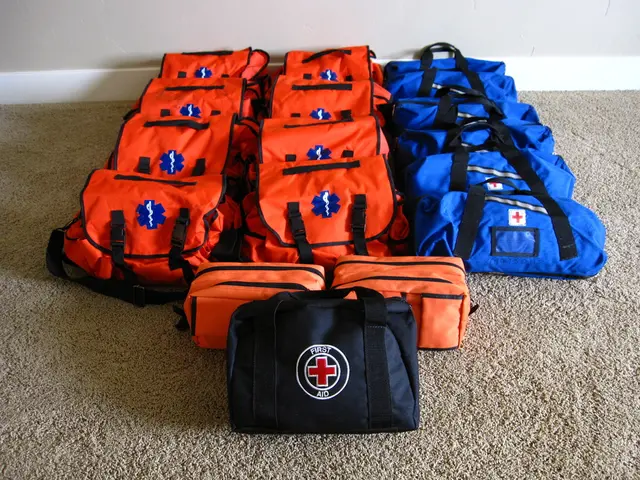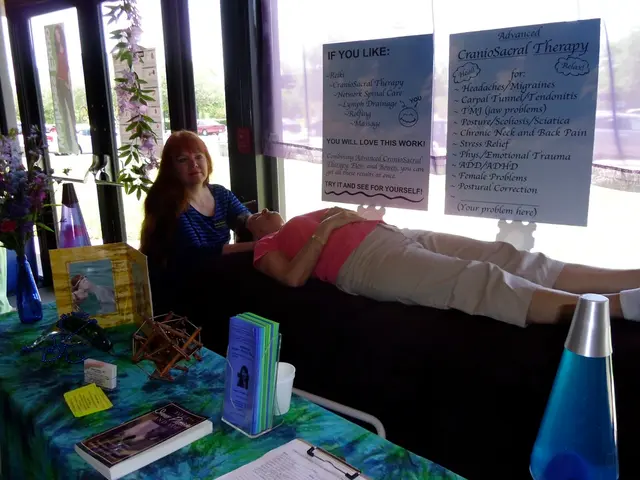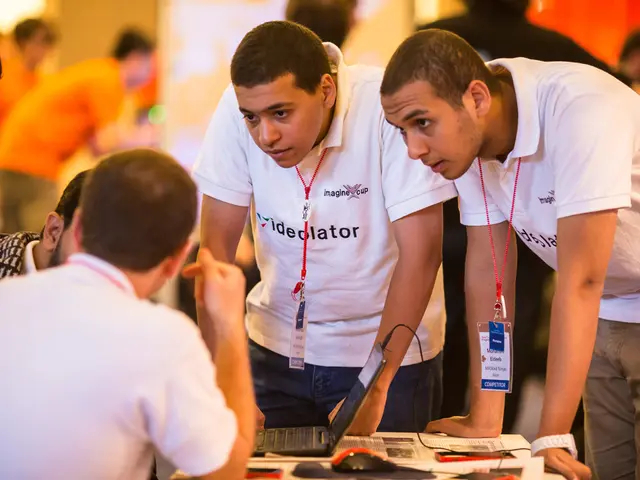Choices for knee treatment: Are knee injections or knee replacements the best solutions for me?
In the realm of managing knee osteoarthritis (OA), two innovative treatment approaches are gaining attention: plasma-rich platelet (PRP) therapy and partial knee resurfacing.
PRP therapy, a biological approach that involves injecting a patient's own blood platelets into the knee joint, has shown promise in providing long-lasting pain relief and enhancing joint mobility. Studies suggest that PRP injections can outperform hyaluronic acid and corticosteroid injections in terms of duration and effectiveness, potentially improving patients' quality of life [1][2][3]. Moreover, PRP has the potential to promote cartilage repair and reduce inflammation, which may slow the progression of OA [3].
However, it's important to note that the American College of Rheumatology (ACR) does not currently recommend PRP for treating OA of the knee due to a lack of evidence on safety and effectiveness [4]. The effectiveness of PRP injections can vary based on the preparation protocol and individual patient needs, with tailoring the PRP preparation to the stage of osteoarthritis crucial for optimal results [5].
On the other hand, partial knee resurfacing offers an alternative surgical approach that may feel more natural and have faster recovery times compared to total knee replacement. This procedure involves removing and replacing only the damaged surface of the knee joint, leaving any healthy cartilage intact [6]. Studies have shown that partial knee resurfacing can be more cost-effective than total knee replacement after 5 years [7], and it has been found to have similar clinical outcomes, reoperation and complication rates, but significantly higher rates of patient approval [8].
Total knee replacement, a common treatment for advanced OA, involves removing the worn-out cartilage of the knee and capping it with metal and high-grade plastic. While effective, it comes with risks such as infection, nerve damage, complications from general anesthesia, blood clots or deep vein thrombosis (DVT), heart attack, stroke, and fatality [9].
In cases where nonsurgical methods are no longer effective and the condition affects mobility and quality of life, knee replacement surgery may be considered. It's essential to weigh the benefits and risks and discuss options with a healthcare provider.
In addition to these treatments, home remedies such as avoiding putting weight on the knee, applying a cold compress, taking over-the-counter pain relief, exercising, avoiding stairs, and using a stationary bike for low-impact exercise can help alleviate knee pain [10].
It's crucial to remember that delaying knee replacement surgery may lead to further deterioration of the knee joint, increasing the risk of abnormalities developing inside and outside the joint, muscles, ligaments, and other structures becoming weak and losing function, increased pain or an inability to manage pain, increased disability or lack of mobility, and difficulty with normal daily activities [11].
Viscosupplementation, or hyaluronic acid injections, are sometimes recommended for OA of the knee. However, the most recent research has not found this method to be effective at reducing pain or improving function [12]. Common side effects of HA injections into the knee include localized pain, warmth, swelling, difficulty moving the knee, bleeding, blistering, rash or hives, burning or coldness, stinging or itching, skin discoloration, a feeling of pressure in the knee joint, and infection [13].
In conclusion, while PRP therapy and partial knee resurfacing offer promising options for managing knee OA symptoms and potentially modifying the disease process, it's essential to discuss these treatments with a healthcare provider to determine the best course of action based on individual needs and circumstances.
- The predictive potential of PRP therapy in providing long-lasting relief from depression-like symptoms in patients with obesity, diabetes, and chronic-kidney-disease, who also suffer from knee pain due to osteoarthritis (OA), is yet to be established through further scientific research.
- Aq (athroscopic surgery) and orthopedic therapies, such as viscosupplementation (hyaluronic acid injections) and PRP therapy, are increasingly being explored as alternatives to manage chronic-diseases like OA, alongside fitness-and-exercise and health-and-wellness practices.
- While PRP injections have shown potential in enhancing joint mobility and promoting cartilage repair, they are not currently recommended by the American College of Rheumatology (ACR) for treating knee OA due to a lack of concrete evidence on safety and effectiveness.
- The effectiveness of PRP therapy can vary based on the preparation protocol and individual patient needs, with tailoring the PRP preparation to the stage of OA crucial for optimal results.
- In the health-and-wellness field, chronic-kidney-disease, obesity, diabetes, depression, and other chronic-diseases are commonly linked to knee pain and osteoarthritis, necessitating numerous therapies-and-treatments, including the newly emerging innovative ones like PRP therapy and partial knee resurfacing.
- Total knee replacement, a common surgical approach for advanced OA, is known to increase the risk of complications like infection, nerve damage, complications from general anesthesia, blood clots or deep vein thrombosis (DVT), heart attack, stroke, and fatality.
- In cases where nonsurgical methods are no longer effective and the condition affects mobility and quality of life, orthopedic surgery like knee replacement may be considered, given the weighing of benefits and risks and discussion with a healthcare provider.
- Delay in knee replacement surgery may lead to further deterioration of the knee joint, increasing the risk of abnormalities developing inside and outside the joint, muscles, ligaments, and other structures becoming weak and losing function, resulting in increased pain or an inability to manage pain, increased disability or lack of mobility, and difficulty with normal daily activities.




